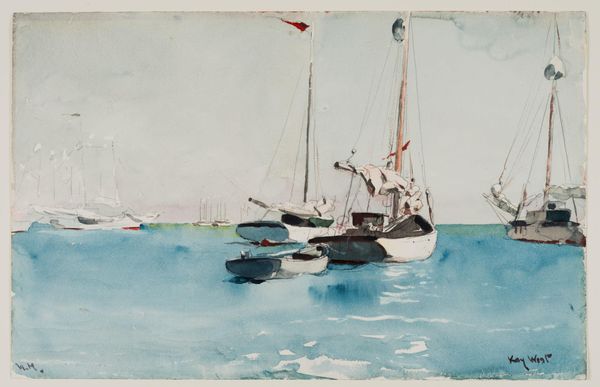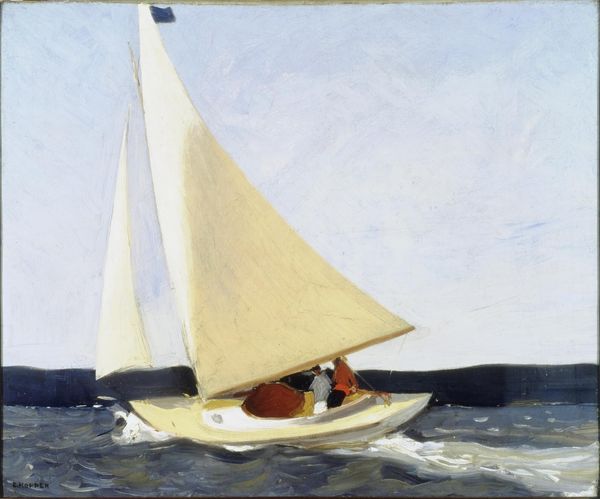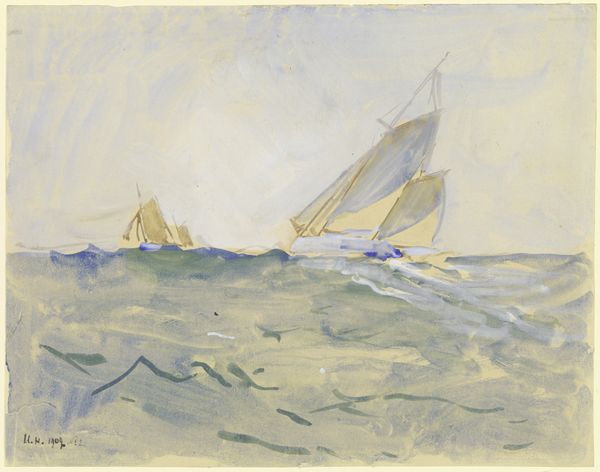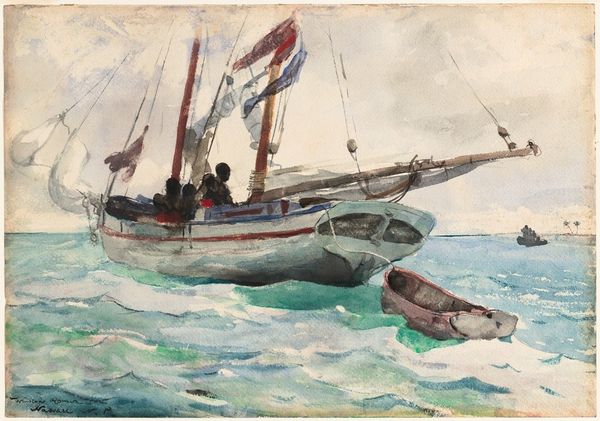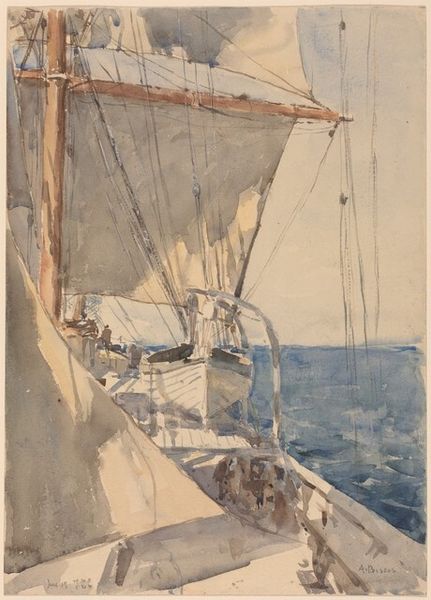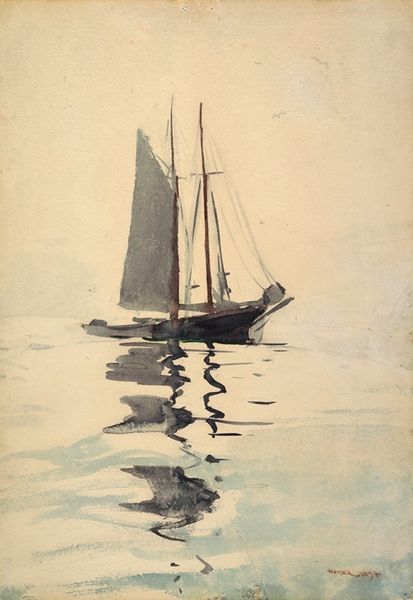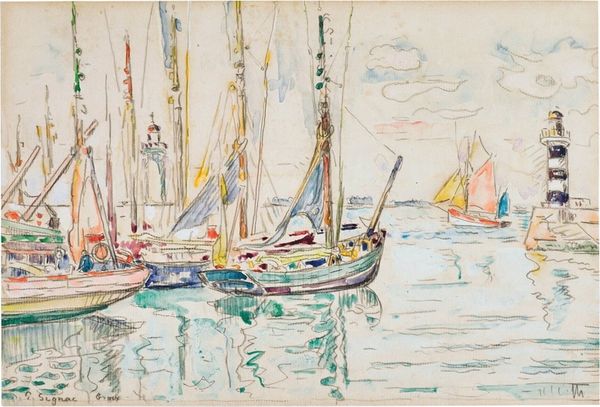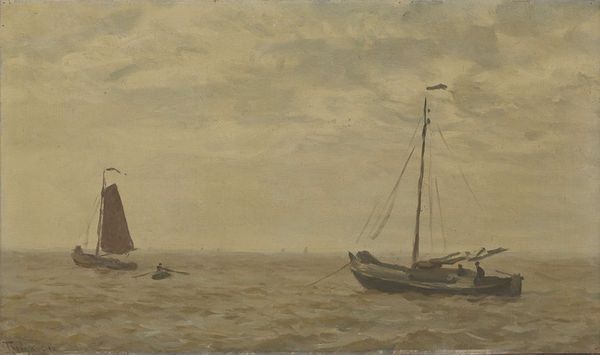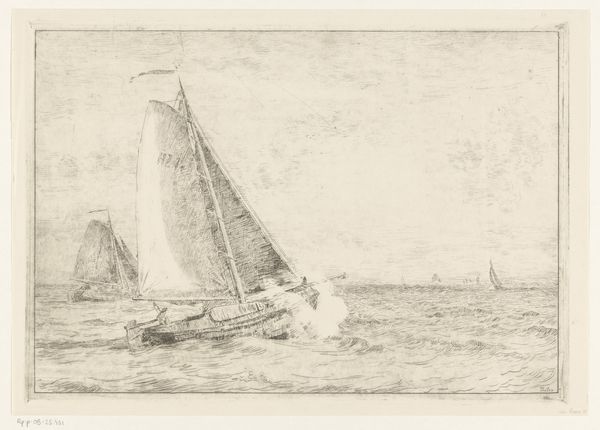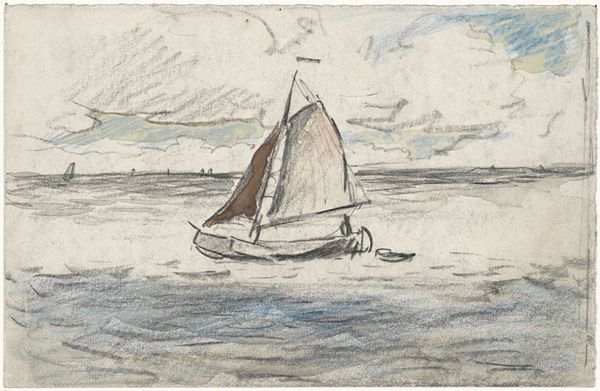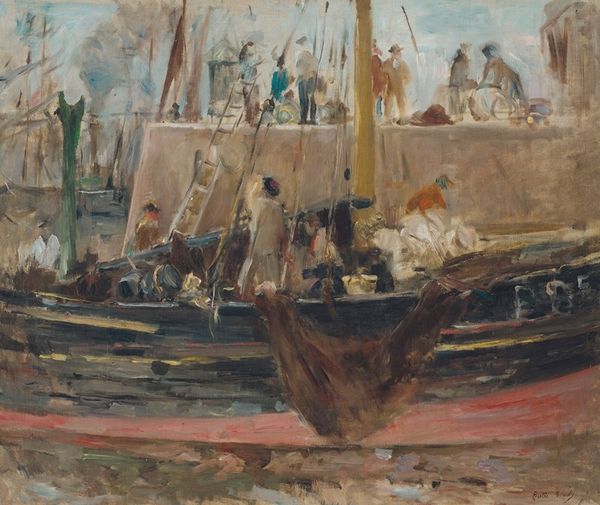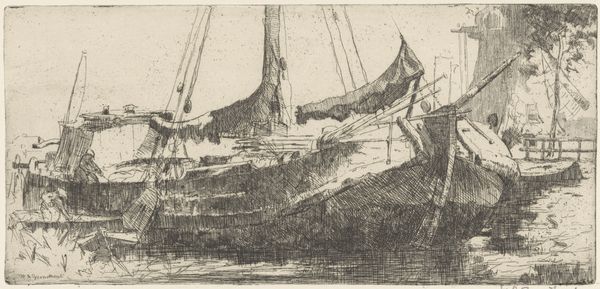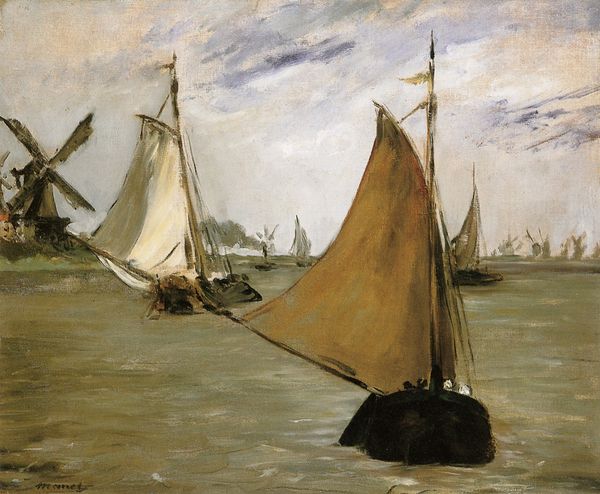
Copyright: Public Domain: Artvee
Curator: Winslow Homer’s "Key West, Hauling Anchor" created in 1903 presents a unique study of labor at sea. Rendered in watercolor, this painting depicts a group of figures aboard a sailing vessel, presumably in the act of weighing anchor. Editor: My immediate reaction is one of subdued activity and quiet strength. The cool blues and grays evoke a sense of tranquility despite the implication of demanding physical work being performed. Curator: Indeed. Homer's choice of watercolor is significant. This medium was often dismissed in his time, yet he uses it to express the working-class experience in the American landscape. Look how the composition draws you in to contemplate this social scene with undertones related to post-slavery labor in America, its dynamics and inequalities. Editor: The whiteness of the boat in contrast with the people makes me question, who exactly is "hauling" here? The symbol of the anchor itself – usually one of hope and stability – takes on a double edge when we consider who gets to experience these things and under what conditions. I can also make out small details about a distant tropical island, reinforcing themes about location, displacement, and work migration to the coast. Curator: Right, these are incredibly valuable questions. If we consider the imagery in relation to his previous depictions of Black figures after the American Civil War, we must consider how these compositions continue exploring complex themes of freedom, identity, and the social realities of the time, specifically of disenfranchised Black Americans. The symbol of a boat could be interpreted as transport to newfound opportunity or an escape for social and economic progress, although perhaps not for all. Editor: And yet, despite the potential implications of those disparities, Homer grants these people dignity through posture and position. They aren’t mere objects, or tropes; they seem ennobled. There is an echo here too of ancient iconography—labor on the water being connected to journeys and potential riches to come, either material or spiritual. Curator: Agreed. Homer invites us to reflect on how our histories intersect, revealing not just individual experiences, but the collective, interconnected realities that shape societies. Editor: Absolutely. Looking closer, I appreciate Homer's sophisticated use of cultural symbolism and imagery as commentary on the dignity, challenges, and nuances of their historical circumstances.
Comments
No comments
Be the first to comment and join the conversation on the ultimate creative platform.
